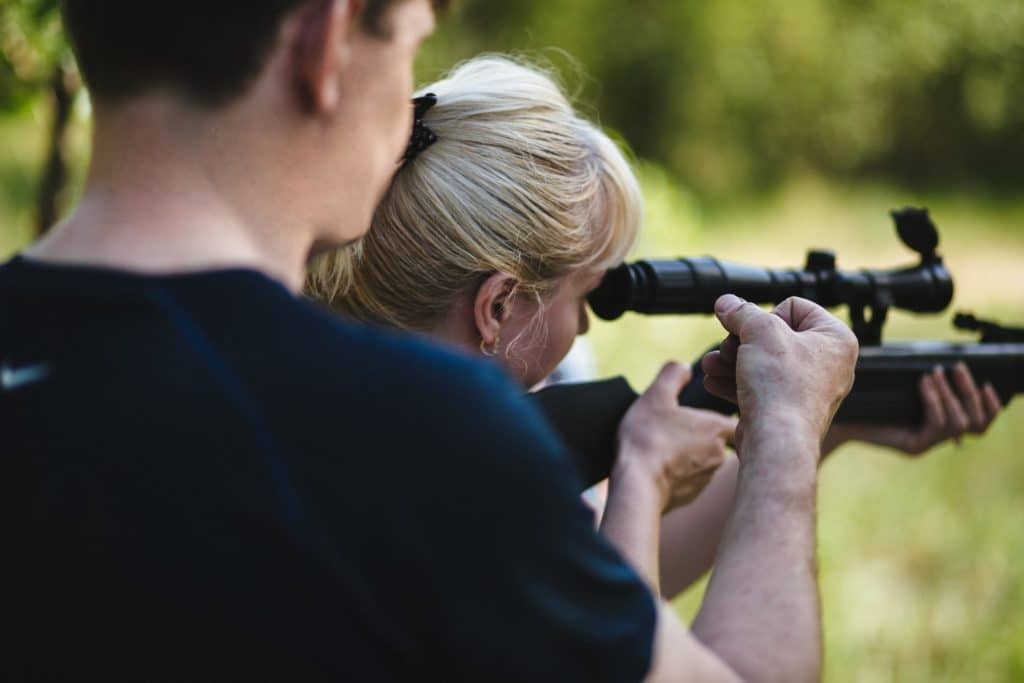Frequently Asked Questions
Rifle or Pistol Shooting FAQs
Why do I Have Pain During Rifle or Pistol Shooting?
Shooting is a sport that requires athletes to maintain a steady position for an extended period of time. This requires isometric muscle contraction which can create spasm, muscle knots and joint misalignments. Shooting is also typically done exclusively from either the left or right side. These one sided positions can create posture, muscle and alignment asymmetries. Over time the repetitive recoil can cause shoulder, wrist, elbow and back pain. The prolonged time in one position, the one sided nature of shooting positions and recoil can cause posture, alignment, muscle and joint issues resulting in pain.
What are the Most Common Shooting Related Injuries Seen at Ward Chiropractic and Rehabilitation?
We see a variety of shooting-related injuries come through our doors, but the most common involve muscular strain, trigger point headaches due to tight upper traps, and carpal tunnel. We also see that pinched nerves and stiffness throughout the neck and back are heavy side-effects for this recreational activity. Most injuries are due to severe gun recoil that can cause tissue damage and trauma to the shoulders.
Can Chiropractic and Rehabilitation Treatments Help Injuries from Rifle or Pistol Shooting?
We have experience treating a verity of injuries and pain due to rifle and pistol shooting. Our evaluations use range of motion, alignment tests and muscle palpation to determine the specific cause or causes of the problem.
After hearing your story and completing a detailed examination we will make specific treatment recommendations. Our treatments our gentle and do not typically involve the use of drugs or surgery. In some cases treatment may require surgical or other medical management. While this scenario is rare, we work with a network of medical doctors in the region who specialize in these referral situations.

We pride ourselves in our caring and long-term relationships we develop with our patients, so schedule an appointment today. We look forward to seeing you!
What is Causing my Pain During Rifle and Pistol Shooting
Our approach begins with a comprehensive evaluation of the body to determine what is causing the pain. It’s important to realize that a misalignment in the foot such as a flat foot can cause knee pain and back pain. Similarly a problem with the shoulder can affect the neck and so on. We focus on finding and eliminating the causes of pain. Our goal is to return athletes to sport as rapidly as possible and help athletes maintain maximum performance.
What are the Treatments for Pain from Rifle and Pistol Shooting
The foundation of treatment involves restoring the proper alignment through gentle and specific manual adjustments. We also use rehabilitative exercises to correct muscle activation. An athlete should be relaxed during competition. Constant muscle tension can cause pain and decreased performance. We use adjustments and targeted exercises to restore a relaxed muscle tone. We also check and improve flexibility, core stability and strength. For muscle spasm and trigger points we us a technique that combines massage and stretching to release stubborn knots
When Should I Consult a Specialist?
If the pain you are experiencing from shooting is persistent throughout the activity, or if the pain lingers for a substantial amount afterward, it’s time to see a specialist who can assist you. Many patients are living with tissue damage and torn rotator cuffs and don’t even know it! If it is hard to raise the shoulders above the head or finish simple activities such as brushing the hair or reaching for objects, you could be experiencing a problem that will grow worse without proper treatment. A chiropractor can help diagnose the problem and relieve nagging pains. Don’t underestimate your symptoms, and always listen to what your body is telling you.
What can I do to Prevent Pistol or Rifle Shooting Injuries
The best step you can take is knowing and understanding your body. When you experience harsh reactions to your shoulders or other upper limbs, it is important to recognize the strain and take a rest as repeated trauma to the area can prevent extensive damage. If pain occurs, take longer breaks to allow the muscles to fully relax. You may also consider arm braces to help stabilize the upper body while shooting. As they say “an ounce of prevention is worth a pound of cure!”

